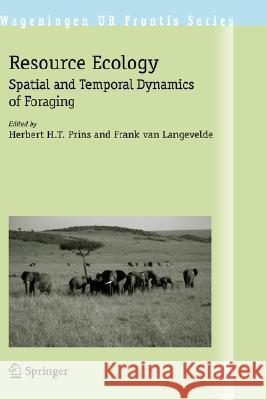Resource Ecology: Spatial and Temporal Dynamics of Foraging » książka
Resource Ecology: Spatial and Temporal Dynamics of Foraging
ISBN-13: 9781402068485 / Angielski / Twarda / 2008 / 306 str.
Resource Ecology: Spatial and Temporal Dynamics of Foraging
ISBN-13: 9781402068485 / Angielski / Twarda / 2008 / 306 str.
(netto: 766,76 VAT: 5%)
Najniższa cena z 30 dni: 771,08
ok. 22 dni roboczych
Dostawa w 2026 r.
Darmowa dostawa!
This book focuses on resource ecology, which we defined as the ecology of trophic interactions between consumers and their resources . In our endeavour to shape the discipline of resource ecology further, we invited some world-class scientists to think with us. We thus organised a symposium where we made sure that we paid attention to the original Greek meaning of the word: we discussed, ate and drank together and, for health reasons, made sure that we hade enough time for strolling and bicycling along the banks of the River Rhine. We even climbed a beautiful mediaeval church tower dedicated to Saint Cunera dating back to the year that Columbus sailed for America. In ecology, spatial ecology is an up-and-coming domain of science. It addresses the effects of space and scale on the dynamics of individual species and on the structure and dynamics of multi-species assemblages. More than a few recent studies demonstrate the significance of taking into account the spatial structure of resources on the population dynamics and assemblage structure of consumers. We believe that bringing together scientists specialised in foraging theory with those who know much about spatial ecology can create a new context from which new theory will emerge. Every chapter was written on invitation. We as editors had outlined what we had in mind and sent that outline to the selected authors."











